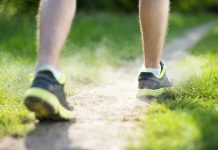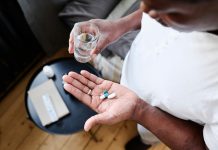
A recent study conducted by the Department of Internal Medicine at the University of Utah has shown that regular aerobic exercise later in life not only boosts cardiovascular health but also helps maintain genetic stability.
This research will be presented at the American Physiology Summit in Long Beach, California, an event hosted by the American Physiological Society.
Historically, exercising later in life was considered less beneficial, but newer studies, including this one, challenge that belief. Aerobic activities such as walking, cycling, and swimming, when performed regularly by older adults, significantly lower the risk of dying from heart-related issues.
This study goes a step further to explore how exactly these exercises contribute to better health at a genetic level.
The focus of the research was on the prevention of DNA damage and the dysfunction of telomeres, which are the protective caps at the ends of chromosomes. Damage to these can lead to cellular aging and disease.
The study specifically looked at the effects of exercise on endothelial cells, which line the interior surface of blood vessels and are crucial for vascular health.
For the study, researchers provided 15 male mice with access to a running wheel, allowing them to exercise voluntarily. Based on the distances they ran consistently, the mice were grouped into high, moderate, and low activity levels.
After four months, samples from the aortic tissue, which varies in blood flow and susceptibility to atherosclerosis, were analyzed.
The findings were promising. In areas of the aorta with better blood flow—those less prone to atherosclerosis—the benefits of exercise were especially pronounced. Regular aerobic activity appeared to protect these crucial areas by reducing DNA damage and maintaining telomere integrity.
Jisok Lim, Ph.D., a postdoctoral fellow at the University of Utah and lead researcher of the study, highlighted the implications of these results.
“These new findings will greatly impact our understanding of the mechanisms by which aerobic exercise improves vascular health at the level of genomic stability,” Lim stated.
He added that the research lays a foundation for future studies and potential health interventions that could be tailored to how different regions of the aorta and various cell types respond to exercise.
While further research is needed to fully understand all the mechanisms involved, this study makes it clear that it’s never too late to benefit from physical activity.
The protective effects of exercise on the cardiovascular system and at the genomic level hold promising potential for enhancing health and longevity in the later stages of life.
This research not only supports the importance of staying active as we age but also offers hope for more targeted approaches to preventing cardiovascular diseases and related genetic complications.
If you care about wellness, please read studies about how ultra-processed foods and red meat influence your longevity, and why seafood may boost healthy aging.
For more information about wellness, please see recent studies that olive oil may help you live longer, and vitamin D could help lower the risk of autoimmune diseases.
Copyright © 2024 Knowridge Science Report. All rights reserved.



